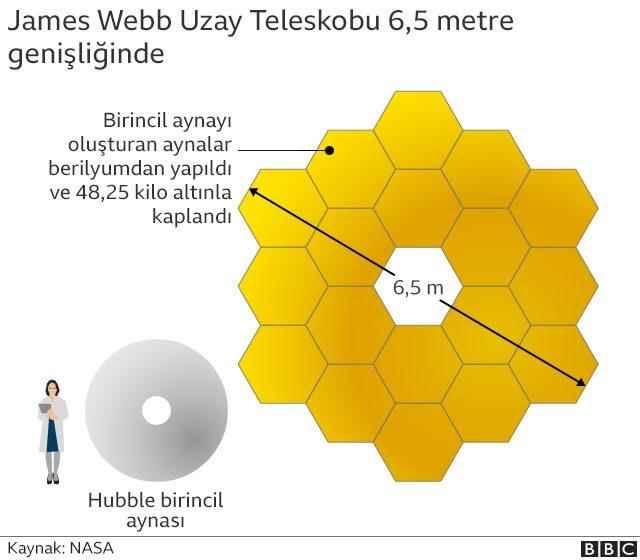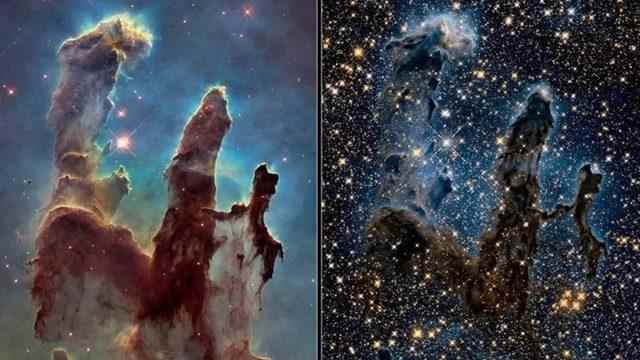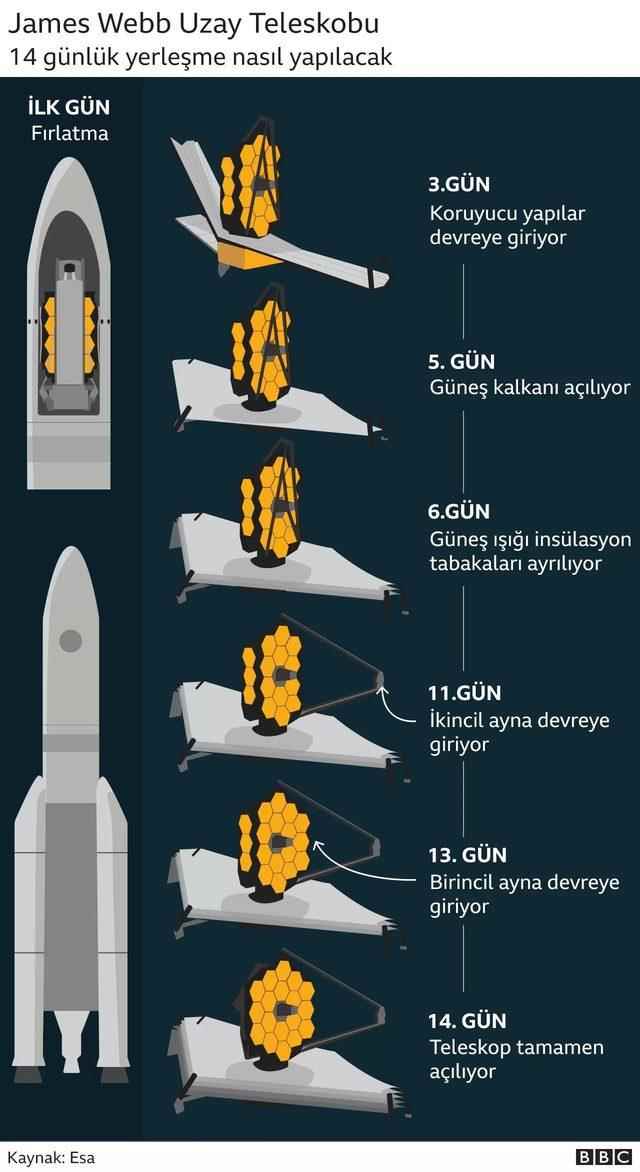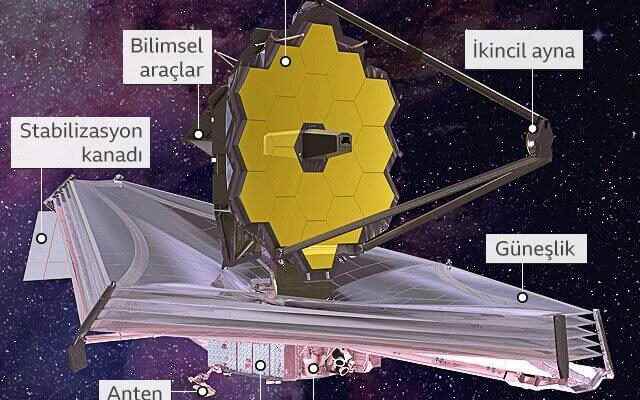The James Webb Space Telescope, whose launch was delayed due to weather conditions, was sent into space today. The telescope was launched from the Kourou spaceport in French Guiana.
Will replace Hubble
The $10 billion James Webb will replace the Hubble Space Telescope.
The new telescope is designed to look deeper into the Universe and detect events going back more than 13.5 billion years.
Scientists also hope to use the telescope’s superior capabilities to study the atmospheres of distant planets and look for signs of life.
“This is an extraordinary mission. It’s a shining example of what we can achieve when we dream big. It will help us better understand the universe and our place in it,” said Bill Nelson, director of the US Space and Aviation Administration (NASA).
Webb is a project based on a partnership between NASA and the European (ESA) and Canadian space agencies (CSA).

Taking responsibility for the launch, ESA will enable the telescope to orbit with one of its reliable Ariane 5 rockets.
Preparations for the rocket and telescope were completed over the weekend, with the telescope placed behind Ariane’s nose cone.
The environment in this area is carefully monitored and is constantly cleaned with filtered dry air.

Ariane will head east from Kourou, across the Atlantic to Africa. The rocket’s ascent is scheduled to take 27 minutes. A radio signal confirming the telescope’s departure from the rocket’s upper stage will be received at a ground antenna in Malindi, Kenya.
https://twitter.com/bbcturkce/status/1475039935564554241?s=20
Video cameras were placed on Ariane to instantly relay developments to Earth.
Webb is sent to an observing station about 1.5 million kilometers from Earth.

This journey will take about a month. During this time, the telescope will open its 6.5-metre-diameter main mirror and tennis court-sized shield to shield it from the Sun’s light and heat.
Apart from being larger and having updated technologies, Webb’s main difference from Hubble is that it is tuned to see the cosmos mainly in infrared.
Hubble, on the other hand, was tuned to optical or visible light, that is, at frequencies perceived by the human eye.

Longer wavelengths of infrared will allow Webb to see things that cannot be seen with other telescopes.
“Long wavelengths are much more effective at seeing through dust,” said Professor Gillian Wright, principal investigator for Webb’s Mid-Infrared Device (Miri) Europe.
“We know that stars and planets form in very dusty regions. Miri’s role is critical if we want to do more research on how they formed.”
